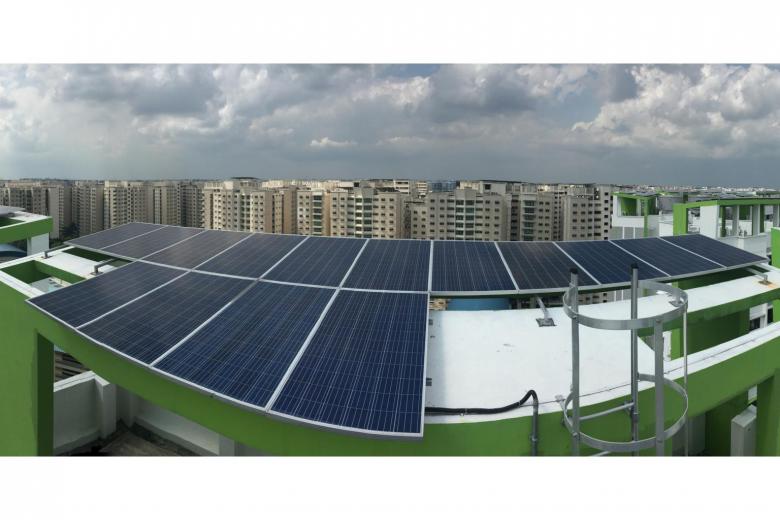SINGAPORE - Installing solar panels on new Housing Board blocks will soon be a faster and cheaper affair. Since May (2017), new Build-to-Order flats with sufficient rooftop space have been designed to be solar-ready, said the HDB in a statement on Friday (Sept 1).
This means that essential block services like water tanks are placed in a way to optimise available rooftop space, while support structures and electrical infrastructure for the panels are catered for. That way, there is a reduced need for rewiring and hacking works down the line, saving time and costs.
Such rooftops cut down the time taken for panels to be installed, from 40 days to 25. The cost of installation is also about 40 per cent cheaper.
The energy generated through the panels can then be used to power common services for the block, such as lifts.
The move is HDB's latest measure to develop its solar capabilities for more sustainable living - a project that began in 2008.
The agency is installing the bulk of solar photovoltaic systems here. It has committed to fulfil over 60 per cent of the nationwide target of 350 megawatt peak (MWp) - the maximum amount of solar power that can be generated under optimum conditions - by 2020. This will fuel about 5 per cent of energy demands here.
To do so, the HDB is targeting to install solar panels across 5,500 blocks within the same timeframe.
This would generate clean energy to power about 55,000 four-room flats every year. Carbon emissions, projected to hit 77.2 million tonnes in 2020, will be reduced by 132,500 tonnes a year.
As of July (2017), 944 HDB blocks have solar panels fitted on their roofs, which fully power common services for the estates, like lifts and water pumps. This makes up about 45 per cent of Singapore's current total solar installations.
Using solar power helps to mitigate rising electricity costs.
As a result, on average, all 944 HDB blocks are able to achieve net-zero energy consumption, where the total amount of energy used by the building is roughly equal to the amount of renewable energy created on-site.
Excess solar energy is channelled back to the national electrical grid, and currently, there is enough to power about 10,000 four-room flats each year.
Solar-ready roofs were first rolled out to six blocks at the Punggol Edge development and later extended to 27 blocks at Punggol Northshore in April last year (2016).
In its statement, the HDB said that all new public housing blocks with at least 400 sqm of open roof space will be designed with solar-ready roofs where feasible.
It will also review projects that are currently under construction to see if solar-ready roofs can be incorporated into their design.
As of last month (August), a total of 18 HDB projects have been designed with solar-ready roofs, including ongoing BTO projects in Sengkang, Bidadari and Bukit Batok.
The HDB told The Straits Times that despite the new feature, however, not all BTOs will be handed over to town councils with solar panels installed.
"For better economies of scale, HDB will need to first aggregate sufficient demand before calling a solar-leasing tender. As such, it would not always be feasible to install solar panels on the roofs of HDB blocks from the onset," a spokesman said.
But where feasible, she added, the HDB will try to do so. For example, projects such as Treelodge@Punggol, SkyVille@Dawson and SkyTerrace@Dawson came with solar panels installed.



